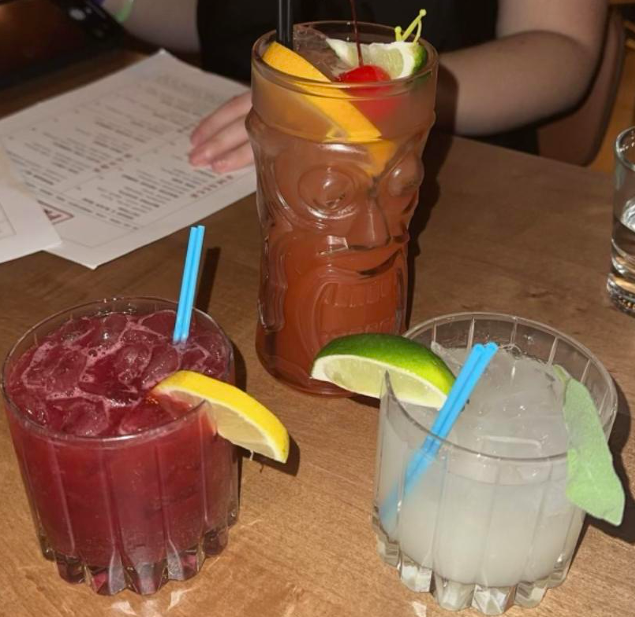
In order to become a beer artist, the first question you must ask is: what do you want to brew? You may want to consider brewing a pilsner, a lager or even a stout. Some beers are a bit harder to brew than others, so keep this in mind when deciding on a beer.
Before you start brewing, you are going to need materials. For these, you can visit Beer & Winemaking Supplies in Northampton. Beer & Winemaking Supplies sells a starter kit for $124.95 that includes most of the necessary materials for brewing beer. It even comes with an instruction book and materials for a batch of amber ale.
The starter kit does not include the bottles for bottling your beer, and you are going to need around 60 of them.You can either go out a buy a lot of beer to get the bottles or you can go with a second, cheaper solution. Head around to all the parties you can find on a Friday night and ask if you can have some of the beer bottles there. Just be sure to soak the used ones first in hot, soapy water.
Other materials needed are as follows: a strainer, a stirring spoon, an eight to 10 quart cooking pot, and a large five gallon cooking pot. Chances are that you have the first three items on that list, but the larger pot may be an issue. You can find one online at Amazon.com for $30, or you can head to Homebrewing.com where they sell these pots for slightly cheaper.
Homebrewing.com also has a number of starter kits, and if you don’t mind the wait, it is generally cheaper and more convenient to buy one of the company’s many starter kits, which includes everything an up and coming homebrewer may need, except the first batch of beer ingredients.
Once you have your materials you need to get ready for setup. Keep in mind that you will need a place with a stove that won’t be needed for at least six hours – that’s how long the process takes, so rent a few movies – to brew your beer.
Brewing beer smells – a lot. So don’t take a stab at brewing the day you plan to have a lot of company over.
Start by boiling a gallon of water in the pot for 10 minutes, then cover and let cool to room temperature. This will probably take about an hour.
The next step is to make the wort. The wort is the liquid that you will be making by extracting it from your malted barley. The wort is what will later be fermented into beer. This will take about an hour and a half.
Take your pot, put two gallons of water in and bring it to a boil. Once boiling, pour the water in the fermentor bucket and allow it to cool. Put the lid on the bucket during the cooling process. Then, bring three more gallons of water to a boil.
Once brought to a boil, stir in the malt extract, but turn off the stove first. After the malt extract dissolves completely, turn the stove back on and continue boiling, stirring regularly.
At this point, if your kit came with hops, you should add them to the pot. Just pour them in and continue stirring. You will be boiling water and malt extract mixture for an hour.
Your kit may have also come with finishing hops, which are added 15 minutes prior to the end of the boiling period.
Once you have finished boiling, let the pot cool down to room temperature. But this step must be done quickly. To do so, immerse the pot into a cold water bath. During this part, the lid should be kept on the pot to prevent any contaminating elements from getting in.
Once this is done you have what is called the wort. Congratulations!
Your batch brewers’ kit should have come with a yeast solution. At this point the yeast can be poured in the fermentation bucket where you had the two gallons of water. Once your wort is cool enough, pour it into the fermentation bucket. If you added hops, strain the wort. Straining should be done aggressively so that it splashes around, allowing the yeast to get the oxygen it needs for growth.
At this point it is important to note that this is the only time during the entire process that your beer should be exposed to oxygen. After this point you will be using a sanitized siphon to move your beer. This should be done with as little disturbance as possible and with little exposure to oxygen.
At this point you are done with the long and involved process of brewing. Once the beer is in the fermentor, put the lid on and find a place to store it out of direct sunlight and at room temperature. You will need to put it in a secure location for two weeks. Once it is moved, insert the airlock that came with the kit and go congratulate yourself. The hard part is officially over, and you can go clean up your kitchen.
After a full day, the airlock should be bubbling steadily, proof of the fermentation happening in your beer.
Once the big day has come, clean and sanitize your bottles.
Then, you need to prime your beer. Your kit may have come with a bottling bucket. If so you can, prime your beer by adding a little bit of sugar to carbonate it. If it did, you can use 3/4 of a cup of corn sugar or 2/3 of a cup of cane sugar. Take two cups of water and boil your sugar in it. Then cover it and allow it to cool.
Then, combine the beer and priming sugar by siphoning the beer into the bottling bucket.
Place the racking cane, the beginning part of the siphon, into the bucket. After this, release the clamp valve and allow the sanitizing liquid to drain into a jar, keeping the outlet below the fermentor so that the sanitizer doesn’t drain into the beer instead. At this point the beer will be drawn through, and you can get ready to bottle.
If your kit did not come with a priming bucket you do not need to go out and buy one. Instead, simply pour your sugar into the fermentation bucket and stir it in, giving it about half an hour to settle once the sugar is mixed in.
There should be a bottle filler attachment that comes with your siphon. You can use this to fill your bottles. You will fill each of your bottles with the primed beer using this before placing a bottle cap on top and crimping down on it with your bottle capper. It’s recommended that you have a friend do the capping while you fill bottles.
Once this is done you will need to let the bottles sit for two or more weeks while they carbonate. You may want to let it carbonate longer to allow for a better flavor. Keep them in the same place you kept the fermenting beer. Your bottles may have a thin layer of yeast at the bottom.
After you have let the bottles carbonate your beer is ready to drink. So crack open a bottle, and if everything went well you will be enjoying a great beer!
If you really want to get serious about homebrewing there are a number of great guides on brewing. Whole books have been written about just certain stages in the process. There’s a lot to it and if you are really interested, you should do more research so you can brew even better beer.
Although your first brew is not likely to be very good, don’t be discouraged. It will take a few batches to get the process down just right, but practice makes perfect, and soon you’ll be brewing beer like a boss.
Tappan Parker can be reached at [email protected]






